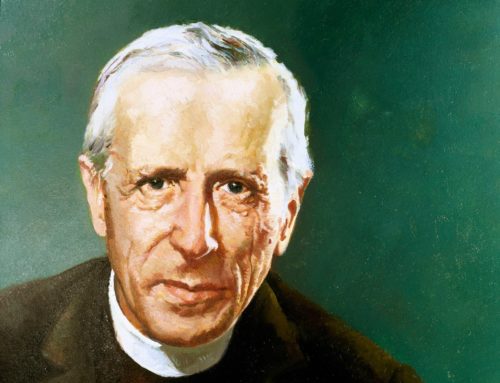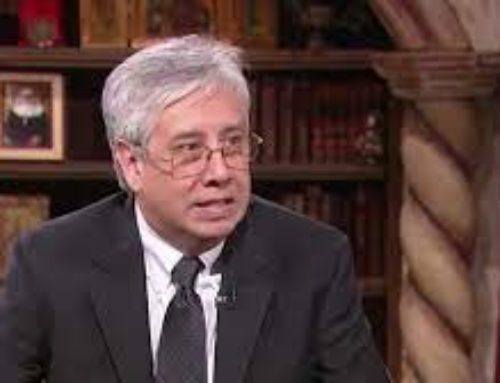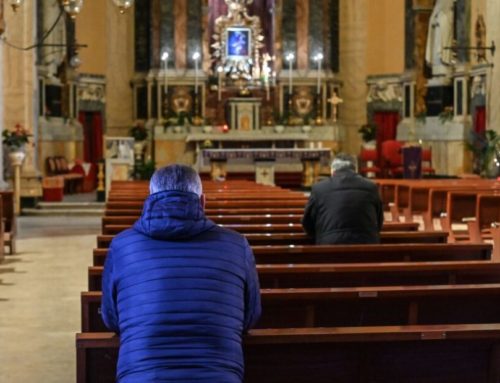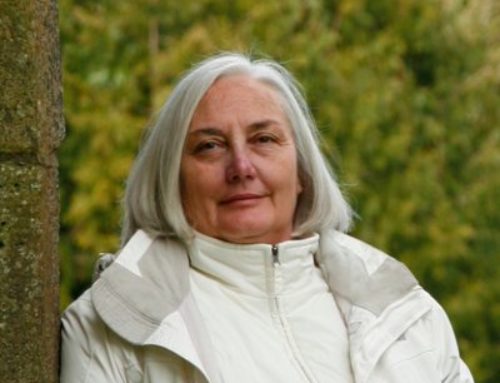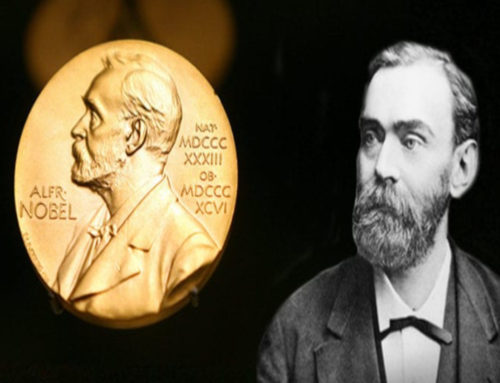The COVID-19 outbreak: the responsibilities of Gao Fu and the Chinese government
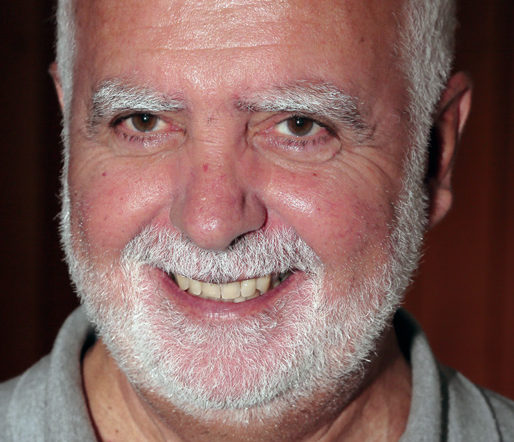
The extent reached by the COVID-19 epidemic with around two million and tens of millions of people infected, and the global health and economic emergencies overshadow questions about how the epidemic was managed in its first phase. In articles on COVID-19, for example, the name Gao Fu rarely appears, which sometimes signs and is presented as George F. Gao, although as Director of the Chinese Center for Disease Control and Prevention (CDC China), he is highest authority on infectious diseases and prevention, and since December 31st, 2019 has been directly involved in the management of the first cases of the outbreak in the city of Wuhan, in the Chinese district of Hubei.
Who is Gao Fu?
Gao was born on November 15th, 1961, studied veterinary medicine, but he did not intent to practicing the profession, so, after graduation, he specialized in microbiology and epidemiology, what allowed him to devote himself to research on infectious diseases.
His remarkable professional career is described, for example, on the website of the U.S. National Academy of Sciences, NAS, of which Gao was elected foreign member in 2019:
“Gao is a world-leading virologist and immunologist who has made some great contributions for the field. He is well known for his scientific contributions to the understanding of the molecular recognition of immune receptors to their ligands and molecular basis of the pathogenicity of pathogens, in particular, influenza viruses and other enveloped viruses, which provide insight into drug and antibody development and the prevention and control of infections worldwide. Gao obtained his PhD (DPhil) degree from Oxford University, UK and did his postdoc work in both Oxford University and Harvard University (with a brief stay in Calgary University). Gao worked in Beijing Agricultural University (1986-1991), Oxford University (2001-2006), Institute of Microbiology, CAS (2004-2008, Director General). Gao is a member (academician) of Chinese Academy of Sciences (elected in 2013), a fellow of The Third World Academy of Sciences (TWAS, also known as The World Academy of Sciences) (elected in 2014), a fellow of American Academy of Microbiology (AAM, elected in 2015); an associate (foreign) member of EMBO (European Molecular Biology organization) (elected in 2016), a fellow of AAAS (American Association for the Advancement of Science) (elected in 2016), a fellow of RSE (Royal Society of Edinburgh) (elected in 2017), a fellow of AAS (African Academy of Sciences) (elected in 2017), a member (academician) of International Eurasian Academy of Sciences (elected in 2018).
Research Interests
Gao’s research interests include virus entry/release mechanism and host immune receptor recognition. His group research is mainly focusing on the virus entry and release, esp. influenza virus interspecies transmission (host jump), structure-based drug-design and structural immunology. He is also interested in virus ecology, esp. the relationship between influenza virus and migratory birds or live poultry markets and the bat-derived virus ecology and molecular biology. He has so far published over 500 peer-reviewed scientific papers and 20 books or book chapters, with an H-index of 70 (till April, 2019). His research has recently expanded on public health policy and global health strategy. His heroic roles in fighting against Ebola outbreak in 2014 by spending two months (between September to November) during the peak outbreak in Sierra Leone, leading a China Mobile Test Laboratory, is highly appreciated worldwide. Gao’s contribution in science is not only for basic life/medical sciences but also for clinical-related preventive medical sciences and public health, which can be reflected from his ‘grand-slam’ publications in 5 top-niche scientific journals, i.e., Nature, Science, Cell, The Lancet and The New England Journal of Medicine”.
It must be added that Gao is member of the Chinese People’s Political Consultative Conference (CPPCC), the country’s highest political advisory body.
John Hopkins University, pandemic and health emergency simulations
The John Hopkins University in Baltimore, Maryland, organized four simulations to prepare appropriate strategies in view of a possible new pandemic. The first simulation, called Dark Winter, was held June 22th-23th, 2001, and “portrayed a fictional scenario depicting a covert smallpox attack on US citizens”. The exercise Atlantic Storm convened on January 14, 2005 “was designed to highlight the numerous complicated global challenges that would arise in the event of any large-scale epidemic of infectious disease, whether caused by a bioterrorist attack or a naturally occurring outbreak”. In 2018 the simulation hypothesized a pandemic provoked by a pathogen agent Clade X. In that simulation, political experts from the US tried to figure out how to respond to the emergence of a new and deadly disease. Despite being a “moderately contagious” and “moderately lethal” virus, at the end of the day — 20 months in simulated time — the virus would have killed 150 million people.
The last simulation, Event 201, was held in New York on October 18th, 2019 with the collaboration of the John Hopkins University, the World Economic Forum and the Bill & Melinda Gates Foundation. In addition to some epidemiology experts, participated in the simulation also representatives of governments and NGOs, executives from private institutions and industries and financial institutions.
“Event201 dropped participants right in the midst of an uncontrolled coronavirus outbreak that was spreading like wildfire out of South America to wreak worldwide havoc. As fictional newscasters from ‘GNN’ narrated, the immune-resistant virus (nicknamed CAPS) was crippling trade and travel, sending the global economy into freefall. Social media was rampant with rumors and misinformation, governments were collapsing, and citizens were revolting.
The fictional CAPS coronavirus described as cousin of SARS, but slightly more transmissible, like the flu, and slightly more lethal was presented as resistant to any existing vaccine, as scientists scrambled to come up with one. Citizens, meanwhile, were rioting over scarce access to the next best thing: a fictional antiviral known to treat some CAPS symptoms. That scenario was considered utterly realistic, because we don’t have a vaccine for SARS, or MERS, or various avian flu viruses that have come up in the past decade. In the simulation, CAPS resulted in a death toll of 65 million people within 18 months—surpassing the deadliest pandemic in history, the 1918 Spanish flu.
This simulation was attended by executives from pharmaceutical companies, the airline Lufthansa and the Bill & Melinda Gates Foundation, but by only two epidemiologists, one of whom is George F. Gao, and, curiously, no representative of the World Health Organization attended.
On October 18th, 2019 Gao Fu participated into this simulation of the management of a coronavirus pandemic as one of the world’s most qualified experts to deal with the problem just a month and a half before the first cases of coronavirus pneumonia in China, and so he could seem just predestined to manage the epidemic excellently.
A short chronicle of the beginnings of the COVID-19 epidemic
The website of China’s official news agency Xinhua published an interview on April 16th with Zhang Jixian, the doctor who first reported cases of suspected pneumonia. This interview reveals some important details about the beginnings of the epidemic:
“On Dec. 26, an elderly couple from a nearby community visited the Hubei Provincial Hospital of Integrated Chinese and Western Medicine. Their symptoms included fever, coughing and tiredness, which ‘looked like flu or common pneumonia’, recalled Zhang, director of the hospital’s respiratory and critical care medicine department. But when their CT scan images reached Zhang the next day, the 54-year-old doctor noticed features that are different from flu or common pneumonia. […] After reading the CT images of the elderly couple, she summoned their son, demanding a CT scan of him too. ‘At first their son refused to be examined. He showed no symptoms or discomfort, and believed we were trying to cheat money out of him,‘ said Zhang. It was Zhang’s insistence that brought her the second piece of evidence: the son’s lungs showed the same abnormities as those of his parents. ‘It is unlikely that all three members of a family caught the same disease at the same time unless it is an infectious disease,’ Zhang told Xinhua.
Also, on Dec. 27, the hospital received another patient who also developed symptoms of coughing and fever and showed the same lung images in the CT scan. The blood tests of the four indicated viral infections. Zhang also prescribed them a series of influenza-related tests. All turned out negative. That day, she filed a report to the hospital, which soon submitted it to the district-level center for disease control and prevention. ‘The report is about we discovered a viral disease, probably infectious,’ she said. […]
After filing the report, Zhang cordoned off an area in the department’s ward to hospitalize the four patients. She then demanded medics in the ward to beef up self-protection. The arrivals of another three patients with similar lung images in the next two days further alarmed the hospital, which on Dec. 29 convened a panel of 10 experts to discuss the seven cases. Their conclusion that the situation was extraordinary, plus information of two similar cases in other hospitals, prompted the hospital to report directly to the municipal and provincial health authorities.
Upon receiving the report, the authorities on the same day ordered an epidemiological investigation. That evening, experts from Wuhan Jinyintan Hospital, a hospital designated to treat contagious diseases, visited Zhang’s hospital and fetched six of the seven patients. That day, Zhang ordered all respiratory doctors and nurses to wear masks, a precaution believed to help achieve zero infection of the medics in the department between late December and Jan. 30.
According to an official timeline released on April 6 on China’s response to COVID-19, the Wuhan Municipal Health Commission on Dec. 30 sent out an urgent notification to medical institutions under its jurisdiction about an outbreak of pneumonia of unknown cause in the city. The National Health Commission (NHC) dispatched a working group and an expert team in the wee hours of Dec. 31 to Wuhan to guide epidemic response and conduct on-site investigations.”
The first three cases belonging to the same household indicated the contagiousness of the infection, and on December 27th Dr Zhang created an isolation area within the ward for the first four patients and she recommended to doctors in the department to increase the protective measures. On December 29th, then, she ordered doctors and nurses of the department to wear a mask.
Based on the report of Dr Zhang’s hospital, on December 30th the Wuhan Municipal Health Commission issued “an urgent notice on the treatment of pneumonia of unknown cause”, intended only for the health institutions under its jurisdiction and that it should remain confidential, but some doctors, including the ophthalmologist Li Wenliang, exchanged some information about it on a chat and so they spread the news. The following day, on December 31th, the cases of suspected pneumonia were centralized in the Jinyintan hospital in Wuhan to be assisted by a team of doctors, local health authorities with the involvement of the CDC China, the World Health Organization was informed to of these cases of pneumonia from unknown etiology. As the first epidemiological investigations had put pneumonia cases in relation to the Huanan Seafood Wholesale Market, this was closed on January 1st, 2020 to be sanitized.
Among the hospitalized cases as of January 2nd, examinations had confirmed 41 cases of coronavirus infection, but only 27 of them had been in contact with the Seafood Market in Wuhan. By January 3rd the number of cases had risen to 44.
In a January 10th interview with the Journal Science Xu Jianguo, who is director of the Beijing-based State Key Laboratory for Infectious Disease Prevention and Control, part of China CDC, and head of an evaluation committee advising the Chinese government, said “the investigation is being led by China CDC but numerous groups in other government agencies are involved. ‘Plenty of people are working on the outbreak’. The role of the evaluation committee Xu leads is to review all the findings and make recommendations to the National Health Commission”. Xu Jianguo claimed that there had been no new cases for days and that “The outbreak is limited”.
Based on the information received, the WHO issued a statement on January 12: Chinese authorities had stated that they had identified and followed up 763 close contacts of patients, including some health professionals, but that they had not found other cases of coronavirus infection and therefore there was no clear evidence of a human-to-human transmission of the virus.
A February 14th article in the Global Times, the English-language daily newspaper edited by the People’s Daily, the official newspaper of the Chinese Communist Party, denounces that “Despite repeated warnings from local doctors, the local health authority reported zero infections during the provincial-level two sessions, important political meetings, from January 6 to 17. On the day the meeting ended, it began reporting new infections, with four new cases reported on January 18.”
Until January 20th, the Chinese authorities supported the zoonotic origin of the infection, that is, patients would have been infected by an animal, and that there was no evidence of human-to-human transmission. Based on this information, the WHO and other international agencies have made their recommendations regarding travel and trade to and from China. The first recommendation, dated January 10th, did not consider restrictions necessary, but only advised to avoid contact with people who had symptoms of an acute lung disease, and advised against visiting markets where live or dead animals were sold. In the Epidemiological Alert Novel coronavirus (nCoV) on January 16th 2020 PAHO, the WHO Pan American Agency, did “not recommend any screening at entry points regarding this event, nor any restrictions on travel or trade” and ”For travelers to the city of Wuhan, promote avoiding close contact with people suffering from acute respiratory infections, as well as avoiding places where farm or wild animals are present, alive or dead.” Not until January 24th the WHO amended these recommendations to make them more stringent.
The possibility of the transmission of the virus from human-to-human was officially admitted on January 20th in an interview given by Dr Zhong Nanshan, medical adviser of the central government, to the television network CCTV, the Central Chinese television. Dr Zhong noted that cases had increased in recent days and that several health workers in Wuhan had also been infected. He made recommendations to the population to avoid the infection.
Gao Fu and the beginnings of the epidemic in Wuhan
In the Global Times of February 14th, Jiang Shigong, a professor of law at Peking University, makes serious accusations against local and regional health authorities, experts from the Chinese Centre for Disease Control and Prevention (CDC) sent by Beijing and also to its General Director, Gao Fu. “Gao Fu, head of CDC, also suggested at an earlier stage of the outbreak that the virus did not show any sign of human-to-human transmission, but he said in research papers published in the New England Journal of Medicine there was a case of human-to-human transmission in mid-December, according to media reports. Such contradictory claims on this matter also sparked public doubts about whether top-level experts sent by CDC hid the facts or were too conservative to make the correct judgment.
‘That is a retrospective analysis, we don’t know what the disease was in mid-December,’ Gao was quoted as saying in local media reports, in response to the online debate. He said the public confused the research paper with clinical diagnosis.”
The article referred to a paper published on the website of Harvard University’s The New England Journal of Medicine on January 29th and came to the following conclusions: “On the basis of this information, there is evidence that human-to-human transmission has occurred among close contacts since the middle of December 2019. Considerable efforts to reduce transmission will be required to control outbreaks if similar dynamics apply elsewhere. Measures to prevent or reduce transmission should be implemented in populations at risk.”
Gao’s justification is not satisfactory, it is clear that the possibility of human-to-human transmission has only been proven retrospectively, but the question is when the research team reached the certainty that there had been a human-to-human infection and what consequences drew from it besides writing an article for an English journal. An article on the Thinkchina, a website in Singapore, clarified some aspects of the online debate caused by the publication of the NEJM article. The article has the incredibly significant title and subtitle: “China CDC Head: Hero or villain? Following a paper published by Gao Fu, head of the Chinese Center for Disease Control and Prevention (China CDC), China’s angry netizens are asking if the China CDC knew earlier that the Wuhan coronavirus could spread between humans”:
“The internet community has asked three questions. First, why did the authorities only officially confirm human-to-human transmission in January 2020, when there were signs of it happening in mid-December 2019 and at which point was the information covered up? Second, was the data collected held back for the paper, or was it suppressed from being released to the public? And third, were the necessary steps taken during the three-week delay in controlling the epidemic, while the researchers with firsthand information were busy writing the paper? Some doctors pulling overtime in emergency departments said they were “beside themselves” with anger. […] Following just one night of fervent online discussions, the angry posts from the Chinese internet community were removed yesterday morning.”
Since January, Chinese authorities’ description of the COVID-19 outbreak was based on some cornerstones: the epicentre of the outbreak would have been at the Huanan Seafood Wholesale Market, where a number of people would have been infected with the virus through an animal source and there was no evidence for human-to-human transmission of the virus. The Chinese authorities have always maintained that they have properly and comprehensively informed foreign health authorities about the course of the outbreak and progress in epidemiological investigations, rejecting their requests for involvement in the investigation, a behavior that has certainly not helped to dispel doubts about the transparency of the information and the possible origin of the current virus from manipulations in the Wuhan virology laboratory.
The Information Service of the Chinese State Council organized an update on the coronavirus outbreak on 22th January, the director of the CDC China, Gao Fu, who was among the speakers, stated about the coronavirus: “We are still in the process of learning more about this virus. It appears to have some characteristics of common coronaviruses but also exhibits some special features. We have confirmed it was transmitted via wild animals illegally sold at a seafood market in Wuhan.” But on May 25th, Gao Fu himself, as reported by the Global Times on May 26th, argued that in the animal samples he collected in Wuhan there were no traces of the virus: “’At first, we assumed the seafood market might have the virus, but now the market is more like a victim. The novel coronavirus had existed long before’. […] Gao said he had gone to Wuhan to collect samples for COVID-19 researchers in early January, but no viruses were detected in the animal samples. Viruses were only found in environmental samples, including sewage.”
The current outbreak certainly has a zoonotic origin, that is, animal, but, as the Global Times article continues, intermediate hosts are not yet known, and “Although the origin of the novel coronavirus is still not clear, some politicians in the US and other countries have continued to spread rumors, calling it the ‘Wuhan virus’ and ‘China virus’, even fabricating stories saying the virus was leaked from a lab at the Wuhan Institute of Virology. […] Wuhan was the place that first reported the epidemic, but that does not make it the source of the virus.” Apart from the hypothesis that the new coronavirus is the product of manipulation in a laboratory in Wuhan, it is undeniable that the crucial phase for the development of the epidemic and its evolution to pandemic took place precisely in Wuhan, as admitted by Ma Xiaowei, Director of the National Health Commission and Minister of Health of China. A press release from the news agency Reuters reported his statements at a January 26th press conference: “The virus, believed to have originated late last year in a seafood market in the central Chinese city of Wuhan that was illegally selling wildlife, has spread to Chinese cities including Beijing and Shanghai, as well as the United States, Thailand, South Korea, Japan, Australia, France and Canada.”
Facts and errors in the first phase of the outbreak
- After visiting the first two patients, husband and wife, Dr Zhang had the suspicion that it was a contagious disease with the possibility of man-to-man transmission and insisted that their son also undergo CT scan, which confirmed the infection.
- The Chinese authorities have for weeks supported the unique zoonotic origin of the infection, focusing attention on the Wuhan Seafood Market, but
- – of the first 41 confirmed cases, only 27 had been in contact with the Seafood Market;
- – if 14 of these cases had not been in contact with the Seafood Market, it was clear that there were other outbreaks and other sources for the infection;
- – how is it possible to argue that 27 people have been infected by an animal without being able to identify it?
- In the January 10th interview, Xu Jianguo argued that there had been no new cases for days and that “the outbreak is limited.” On 12th January, the WHO reported that the Chinese authorities had communicated that they had identified and followed 763 close contacts of coronavirus positive patients, including some health professionals, but that no other cases of infection had been found, and that there was no clear evidence that the virus could easily be transmitted from human-to-human,
- – since the SARS and MERS epidemics, experts and health authorities have tried to prepare for a coronavirus epidemic that could have turned into a pandemic, but the Chinese authorities have reassured the rest of the world by claiming to have limited the epidemic closing and sanitating the Seafood Market;
- – it is possible that even between the 14 people’s contacts without a link to the fish market, no new case has been found? The Chinese authorities have not been able to identify those who infected them and none of these people with COVID-19 would have infected others;
- an article of Global Times of February 14th states that since early January no new cases have been reported until 18th January, but at least Dr Li Wenliang who died on February 7th of COVID-19, showed the first symptoms as early as January 10th and was hospitalized on January 12th.
The Chinese Government
As mentioned, the Global Times article of February 14th criticized the management of the first phase of the epidemic, dumping the responsibility for errors and negliges on the local CDC: “Amid a national outcry of accountability, we also see how experts from the CDC at the Wuhan city level as well as Hubei provincial level pass the buck to each other.” However, the decisive turning point would have taken place after January 23th, the date of the lockdown in Wuhan. “Since the Wuhan city lockdown, the central government has been calling for all-out efforts to fight the epidemic, motivating the whole country to support the epicenter. Xi, as commander of this war, called multiple meetings, heard reports, made important instructions on the prevention and control work and discussed the topic with foreign leaders, Xinhua reported.
He also chaired a meeting of the Standing Committee of the Political Bureau of the CPC Central Committee and demanded that epidemic prevention and control be taken as the most important task, Xinhua said.”
This article seems to suggest that the central government and President Xi Jinping would not be involved in the management of the outbreak until the third decade of January, but official documents contradict this description:
An official reconstruction of the fight against COVID-19 states that the Chinese government has been active since the beginning of the outbreak:
“After the outbreak of COVID-19, the Chinese government gave top priority to the fight against the virus and put the people’s lives and health before everything. President Xi Jinping has led the whole nation in a people’s war of prevention and control against the virus. The ‘wartime-like’ command mechanism and the strategies formulated in accordance with the ground reality offered strong leadership. […]
COVID-19, which has spread rapidly and enveloped most of the world, is a global public health crisis the likes of which we have not seen in a century. After the outbreak, the Chinese government adopted the most comprehensive, stringent and thorough prevention and control measures in an attempt to bring the virus under control. With great courage and will, the spread of the virus has almost been tamed, marking an initial triumph for the country.”
Health Minister Ma Xiaowei opened the press conference of the National Health Commission on January 26th stating that: “Since the outbreak of pneumonia caused by the new coronavirus, the Party Central Committee and the State Council have attached great importance to it. General Secretary Xi Jinping is very concerned about the development of the epidemic and the treatment of patients, and has made important instructions and instructions many times.” Experts from the National Health Commission arrived in Wuhan on December 31th “to guide the response to the outbreak and conduct on-the-spot investigations.”
Other institutions have also been committed to providing the Chinese government with information on the epidemic and its development. The official website of the Chinese People’s Political Consultative Conference, for example, published an interview with its member, Chi Hui: “Since the outbreak of the novel coronavirus in early January, Chi Hui, director of the Institute of Medical Information under the Chinese Academy of Medical Sciences, has kept busy fighting the epidemic in her own way: collecting and analyzing information from home and abroad about the epidemic and making proposals to the government on COVID-19 prevention and control. Over the past few months, Chi and her colleagues have been submitting daily reports on the prevalence of COVID-19, and they have completed a number of research reports on measures to fight the infectious disease at home and abroad and their effects. ‘These reports have provided important references for the decision-making of the government in a timely manner for precise evaluation of the epidemic and mobilizing technological resources to fight the epidemic,’ said Chi, also a member of the National Committee of the Chinese People’s Political Consultative Conference, the top political advisory body.”
According to the website of the official press agency of the People’s Republic of China Xinhua, on January 7th: “Xi Jinping, general secretary of the CPC Central Committee, presided over a meeting of the Standing Committee of the Political Bureau of the CPC Central Committee and issued instructions on the prevention and control of a possible epidemic of the pneumonia of unknown cause in Wuhan.”
The responsibilities of Gao Fu and the Chinese government
Gao Fu, Director of CDC China, is considered one of the world’s leading experts in the field of virology and epidemiology. He was one of two epidemiologists invited to a simulation organized by the John Hopkins University, the World Economic Forum and the Bill & Melinda Gates Foundation to develop strategies for a new coronavirus pandemic. One could not have imagined a more qualified expert worldwide to manage the epidemic that broke out in Wuhan. The CDC has been involved since December 31th, and Gao himself was in Wuhan in early January to personally collect samples to clarify the origin of the infection. The research focused on the Wuhan Seafood Market, and Gao still claimed on the January 22nd that the zoonotic origin of the outbreak had been confirmed, but it is not known on what grounds, if on May 25th he stated that he had found no traces of the virus in the animal samples he had collected.
Certainly Gao Fu played an important role in the management of the epidemic, initially rather limited, and did not avoid its transformation to a global pandemic, but there are attempts to attribute all responsibility to the health and local authorities, while at the same time exonerating the central government and giving them all the credit for containing the epidemic. Experts of the National Health Commission, which has the function of a ministry of health and whose director, Ma Xiaowei, is minister and member of the State Council, arrived in Wuhan on December 31th, and at least from January 7th President Xi Jinping has also personally dealt with the outbreak.
As the weeks went by, the pandemic had increasingly devastating global effects, while the spread in China was waning, this situation has overshadowed the initial errors and negligence and the Chinese authorities could boast of their successes in the battle against the virus, fought since its beginning. It cannot be foroeten, however, that the same Minister Ma Xiaowei admitted that the virus from Wuhan has spread to other Chinese cities and subsequently “in the United States, Thailand, South Korea, Japan, Australia, France and Canada.” The lockdown of Wuhan, declared promptly before the Chinese New Year, which this year fell on January 25th, and the celebrations that began on the day of the eve, that is, January 24th, limited the spread in China, but in the meantime the virus had already spread to many other countries.
The Global Times article of February 14th revealed the moods of the Chinese public opinion: “Many questions have perplexed people, including why the first case of infection was reported in early December but local authorities have not come up with effective measures, why the public health emergency management mechanism did not fully work out in the post-SARS era, and how authorities missed all the ‘golden moments’ to save as many lives as possible.” The same questions can also be asked outside of China, and and one can legitimately think that “the authorities have missed ‘golden moments’ to save as many lives as possible” not only in China but also in all other countries.
Ermanno Pavesi, M.D.
- See Bibliography on:
COVID: Gao Fu e il governo cinese – F.I.A.M.C.


